Pain in Arm After Electric Shock: Causes, Symptoms, and Treatment
What causes pain in the arm after an electric shock. How severe can the pain be. When should you seek medical attention for arm pain after electrical injury. What tests are used to diagnose electric shock injuries.
Understanding Electrical Injuries and Arm Pain
Experiencing pain in the arm after an electric shock is a concerning symptom that should not be ignored. Electrical currents passing through the body can cause various injuries, ranging from minor burns to severe internal damage. The arm is a common pathway for electricity to travel through the body, making it particularly vulnerable to injury.
What Causes Arm Pain After Electric Shock?
Arm pain following an electric shock can result from several factors:
- Muscle damage and spasms
- Nerve irritation or damage
- Burns (external or internal)
- Tissue damage
- Fractures or dislocations
- Compartment syndrome (swelling that compresses blood vessels)
The severity of the pain and associated injuries depends on various factors, including the voltage, amperage, type of current (AC or DC), duration of contact, and the pathway the electricity takes through the body.

Symptoms Associated with Electric Shock Injuries
While arm pain is a primary concern, it’s crucial to be aware of other symptoms that may indicate a serious electrical injury:
- Visible burns on the skin
- Numbness or tingling sensations
- Muscle weakness or paralysis
- Swelling of the affected limb
- Confusion or disorientation
- Loss of consciousness
- Seizures
- Irregular heartbeat
Any of these symptoms, especially when combined with arm pain, warrant immediate medical attention.
When to Seek Medical Help for Arm Pain After Electric Shock
Is it always necessary to see a doctor after experiencing an electric shock? While minor shocks from low-voltage sources may not require medical attention, it’s generally advisable to seek medical help if you experience persistent or severe arm pain following any electric shock. Additionally, medical evaluation is crucial if:
- The shock was from a high-voltage source
- You lost consciousness, even briefly
- You have visible burns
- You experience any of the symptoms listed above
- The pain is severe or worsening
- You have a pre-existing heart condition
Remember, some electrical injuries may not be immediately apparent, so it’s better to err on the side of caution and get checked by a healthcare professional.

Diagnosing Electric Shock Injuries
When you seek medical attention for arm pain after an electric shock, healthcare providers will conduct a thorough evaluation to assess the extent of the injury and identify any potential complications.
Physical Examination
The initial assessment typically involves a physical examination where the doctor will:
- Inspect the skin for visible burns or entry/exit wounds
- Check vital signs, including heart rate and blood pressure
- Assess neurological function, including sensation and muscle strength
- Evaluate range of motion in the affected arm
Diagnostic Tests
Depending on the severity of the shock and the presenting symptoms, various diagnostic tests may be ordered:
- Electrocardiogram (ECG): To check for any cardiac abnormalities
- Blood tests: To assess for muscle damage and electrolyte imbalances
- Imaging studies: X-rays, CT scans, or MRIs to identify internal injuries or fractures
- Nerve conduction studies: To evaluate nerve function if neurological symptoms are present
These tests help healthcare providers determine the full extent of the injury and guide appropriate treatment.

Treatment Options for Arm Pain After Electric Shock
The treatment for arm pain following an electric shock depends on the severity and nature of the injury. Here are some common approaches:
First Aid and Immediate Care
- Ensure the person is no longer in contact with the electrical source
- Check for breathing and pulse, and begin CPR if necessary
- Cool any visible burns with cool (not cold) water
- Cover burns with a clean, dry dressing
Medical Treatments
For more severe injuries, medical treatments may include:
- Pain management with medications
- Intravenous fluids to prevent dehydration and support organ function
- Wound care and burn treatment
- Antibiotics to prevent infection in burn cases
- Monitoring and treatment of cardiac abnormalities
- Surgery in cases of severe burns or compartment syndrome
In some cases, long-term rehabilitation may be necessary to regain full function of the affected arm.
Preventing Electrical Injuries and Arm Pain
While not all electrical accidents can be prevented, many can be avoided by following proper safety precautions:

- Regularly inspect electrical cords and appliances for damage
- Avoid using electrical devices near water
- Use ground fault circuit interrupters (GFCIs) in areas prone to moisture
- Never attempt to repair electrical equipment unless qualified
- Keep children away from electrical outlets and cords
- Be cautious when working near power lines
- Follow proper lockout/tagout procedures in industrial settings
By implementing these safety measures, you can significantly reduce the risk of electrical injuries and associated arm pain.
Long-Term Effects and Complications of Electric Shock
While many people recover fully from electric shock injuries, some may experience long-term effects or complications. These can include:
Neurological Issues
- Chronic pain syndromes
- Peripheral neuropathy (nerve damage)
- Memory problems or cognitive impairment
- Mood disorders or personality changes
Physical Complications
- Scarring from burns
- Muscle weakness or atrophy
- Joint stiffness or reduced range of motion
- Cataracts (from high-voltage injuries)
Cardiovascular Issues
- Arrhythmias (irregular heartbeats)
- Increased risk of heart disease
The likelihood and severity of these long-term effects often correlate with the intensity of the initial injury. Regular follow-up care and rehabilitation can help manage and minimize these potential complications.

Legal Considerations and Workplace Safety
Electric shock injuries, particularly those occurring in the workplace, may have legal implications. If you’ve suffered an arm injury due to an electric shock at work or due to faulty equipment, consider the following:
Workplace Injuries
- Report the incident to your employer immediately
- Document all medical treatments and related expenses
- Understand your rights under workers’ compensation laws
- Consider consulting with a workplace injury attorney
Product Liability
If your injury resulted from a defective product:
- Preserve the product and any packaging or instructions
- Document the circumstances of the incident
- Consider seeking legal advice to explore potential claims
Improving Workplace Safety
Employers have a responsibility to maintain a safe work environment. This includes:
- Providing proper training on electrical safety
- Ensuring regular maintenance of electrical equipment
- Supplying appropriate personal protective equipment (PPE)
- Implementing and enforcing safety protocols
By understanding these legal and safety aspects, both employees and employers can work towards preventing electrical injuries and ensuring proper compensation when accidents do occur.

Psychological Impact of Electric Shock Injuries
The psychological effects of experiencing an electric shock and dealing with subsequent arm pain should not be overlooked. Many survivors of electrical injuries may face emotional and psychological challenges, including:
Common Psychological Responses
- Post-traumatic stress disorder (PTSD)
- Anxiety, particularly about using electrical devices
- Depression, especially if dealing with chronic pain or disability
- Sleep disturbances or nightmares
- Survivor’s guilt, particularly in cases involving multiple victims
Coping Strategies
To address these psychological impacts, consider the following approaches:
- Seek professional counseling or therapy
- Join support groups for electrical injury survivors
- Practice relaxation techniques and stress management
- Gradually expose yourself to situations involving electricity (under professional guidance)
- Educate yourself about electrical safety to regain a sense of control
Addressing both the physical and psychological aspects of recovery is crucial for overall well-being following an electric shock injury.

Advances in Treatment and Rehabilitation
Medical science continues to evolve, offering new hope for those suffering from arm pain and other complications of electric shock injuries. Some promising developments include:
Innovative Treatment Approaches
- Advanced burn treatment techniques, including synthetic skin grafts
- Nerve regeneration therapies for improved sensation and function
- Targeted pain management strategies, including neurostimulation
- 3D-printed prosthetics for cases involving amputation
Rehabilitation Technologies
Cutting-edge rehabilitation technologies are enhancing recovery outcomes:
- Virtual reality-based physical therapy
- Robotic-assisted movement therapy
- Biofeedback systems for pain management
- Wearable sensors for tracking progress and adjusting treatment plans
These advancements offer hope for improved outcomes and quality of life for those dealing with the long-term effects of electrical injuries.
As research continues, new treatments and rehabilitation methods are likely to emerge, potentially offering even better prospects for recovery from electric shock injuries and associated arm pain. Staying informed about these developments and discussing them with healthcare providers can help ensure access to the most effective treatment options available.

Pain In Arm After Electric Shock: Should I Be Worried?
Pain in the arm after an electric shock is something to be worried about. Electricity traveling through a person’s arm can cause injuries such as burns, muscle damage, tissue damage, nerve damage, broken bones and dislocations. Pain may be a symptom of these injuries. Prompt medical attention is needed.
What is pain in the arm after electric shock?
Pain in the arm after an electric shock occurs when a person comes into contact with a source of electricity which directly or indirectly sends an electrical current passing through the person’s arm, potentially causing both internal and external injuries.
What if I have swelling in my arm?
Arm pain may be accompanied by swelling of the arm. This phenomenon, which is called “compartment syndrome,” occurs when the shock causes muscle damage that compresses a person’s arteries and, thus, causes a person’s arm or other limbs to swell.
Broken arm
If you’re experiencing extreme pain, then you may have suffered a broken bone caused by the electrical current as it passed through your arm.
What affects the severity pain in the arm after an electric shock?
The factors that will affect the severity of pain resulting include:
- The amperage of the electrical current
- The pathway that the electric current takes as it passes through a person’s arm and whether it damages tissue, muscle and/or bone
- The length of time that a victim was in contact with the electrical source
- A victim’s health and/or medical condition prior to suffering an electric shock
- The type of electrical current that’s involved (e.g., direct current (DC) or alternating current (AC))
Symptoms
If you suffer any the following symptoms associated with arm pain, then you should seek immediate medical attention:
- Burns
- Loss of consciousness
- Numbness
- Tingling (the feeling often described as “pins and needles”)
- Paralysis
- Confusion
- Seizures
- Swelling
Diagnosis and tests for pain in the arm after electric shock
When you seek medical attention, your doctor will conduct a physical examination and ask about how your injury occurred and for details about your medical history.
Your doctor may also order one or more of the following tests to assist in diagnosing the nature of your injury:
- Electrocardiogram or ECG to check your heart
- CT scans
- X-rays (which will detect fractures or dislocations)
- Check your blood count
- Run blood and/or urine tests for the presence of muscle enzymes that are indicative of electric shock-related muscle injury
Need help from an experienced electrocution lawyer?
If you or someone you love is a victim of serious personal injury or death caused by electricity, please call us toll free at (800) 548-0043 for a free consultation.
Author
Jeffrey H. Feldman
Electrocution Lawyer
Jeffrey has tried more electrocution cases than most other injury lawyers in the country. He’s also secured several multi-million dollar verdicts and settlements on behalf of his clients, many who have lost loved ones in electrocution accidents.:max_bytes(150000):strip_icc()/wristpainfinal-01-5c45e56c4cedfd0001871f4e.png)
He’s an honest lawyer. If he takes on a case, it’s because he truly believes in it.
– L.B.
View All Reviews
Electrical Injuries – Injuries and Poisoning
By
Daniel P. Runde
, MD, MME, University of Iowa Hospitals and Clinics
Reviewed/Revised Mar 2022 | Modified Sep 2022
VIEW PROFESSIONAL VERSION
An electrical injury occurs when a current passes through the body, interfering with the function of an internal organ or sometimes burning tissue.
Often the main symptom is a skin burn, but not all serious injuries are visible.
Doctors check the person for abnormal heart rhythms, fractures, dislocations, and spinal cord or other injuries.
Abnormal heart rhythms are monitored, burns are treated, and, if the burn caused extensive internal damage, intravenous fluids and other treatments are given.

Electrical injury may result from contact with faulty electrical appliances or machinery or inadvertent contact with household wiring or electrical power lines. Getting shocked from touching an electrical outlet in the home or by a small appliance is rarely serious, but accidental exposure to high voltage causes about 300 deaths each year in the United States.
Electrical current passing through the body generates heat, which burns and destroys tissues. Burns can affect internal tissues as well as the skin. An electrical shock can short-circuit the body’s own electrical systems, causing nerves to stop transmitting impulses or to transmit impulses erratically. Abnormal impulse transmission can affect the
Muscles, causing them to contract violently
Heart, causing it to stop beating (cardiac arrest Cardiac Arrest and CPR Cardiac arrest is when the heart stops pumping blood and oxygen to the brain and other organs and tissues.
 Sometimes a person can be revived after cardiac arrest, particularly if treatment is… read more )
Sometimes a person can be revived after cardiac arrest, particularly if treatment is… read more )Brain, causing seizures Seizure Disorders In seizure disorders, the brain’s electrical activity is periodically disturbed, resulting in some degree of temporary brain dysfunction. Many people have unusual sensations just before a seizure… read more , loss of consciousness Fainting Light-headedness (near syncope) is a sense that one is about to faint. Fainting (syncope) is a sudden, brief loss of consciousness during which the person falls to the ground or slumps in a… read more , or other abnormalities
The severity of the injury ranges from minor to fatal and is determined by the following factors:
Intensity of the current
Type of current
Pathway of the current through the body
Duration of exposure to the current
Electrical resistance to the current
The intensity of the current is measured in volts and amperes.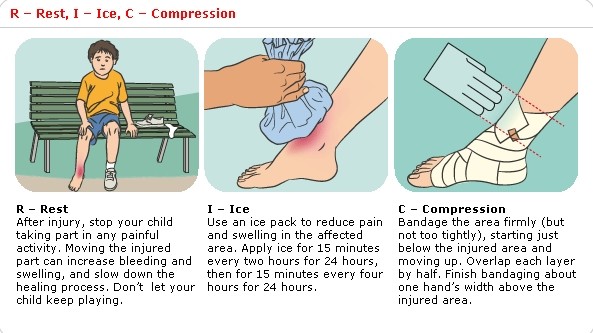 Ordinary household current in the United States is 110 to 220 volts. In many other countries, standard household current is 220 volts. A standard electrical outlet in the US is 110 volts, and 220 volts is used for large appliances such as dryers or refrigerators. Anything over 500 volts is considered high voltage. High voltage can jump (arc) through the air anywhere from an inch up to several feet, depending on the voltage. Thus, a person may be injured simply by coming too close to a high-voltage line. High voltage causes more severe injuries than low voltage and is more likely to cause internal damage.
Ordinary household current in the United States is 110 to 220 volts. In many other countries, standard household current is 220 volts. A standard electrical outlet in the US is 110 volts, and 220 volts is used for large appliances such as dryers or refrigerators. Anything over 500 volts is considered high voltage. High voltage can jump (arc) through the air anywhere from an inch up to several feet, depending on the voltage. Thus, a person may be injured simply by coming too close to a high-voltage line. High voltage causes more severe injuries than low voltage and is more likely to cause internal damage.
Electrical current is categorized as direct current (DC) or alternating current (AC). Direct current, such as current generated by batteries, flows in the same direction constantly. Alternating current, such as current available through household wall sockets connected to the power grid, changes direction 50 to 60 times per second.
Alternating current is more dangerous than direct current. Direct current tends to cause a single muscle contraction often strong enough to force people away from the current’s source. Alternating current causes a continuing muscle contraction, often preventing people from releasing their grip on the current’s source. As a result, exposure may be prolonged. Even a small amount of alternating current—barely enough to be felt as a mild shock—may cause the grip to freeze. Slightly more alternating current can cause the chest muscles to contract, making breathing impossible. Even more current can cause deadly abnormal heart rhythms Overview of Abnormal Heart Rhythms Abnormal heart rhythms (arrhythmias) are sequences of heartbeats that are irregular, too fast, too slow, or conducted via an abnormal electrical pathway through the heart. Heart disorders are… read more (arrhythmias).
Direct current tends to cause a single muscle contraction often strong enough to force people away from the current’s source. Alternating current causes a continuing muscle contraction, often preventing people from releasing their grip on the current’s source. As a result, exposure may be prolonged. Even a small amount of alternating current—barely enough to be felt as a mild shock—may cause the grip to freeze. Slightly more alternating current can cause the chest muscles to contract, making breathing impossible. Even more current can cause deadly abnormal heart rhythms Overview of Abnormal Heart Rhythms Abnormal heart rhythms (arrhythmias) are sequences of heartbeats that are irregular, too fast, too slow, or conducted via an abnormal electrical pathway through the heart. Heart disorders are… read more (arrhythmias).
The path that the electricity takes through the body tends to determine which tissues are affected. Because alternating current continually reverses direction, the commonly used terms “entry” and “exit” are inappropriate. The terms “source” and “ground” are more precise. The most common source point for electricity is the hand, and the second most common is the head. The most common ground point is the foot. A current that travels from arm to arm or from arm to leg may go through the heart and is much more dangerous than a current that travels between a leg and the ground. A current that travels through the head may affect the brain.
The terms “source” and “ground” are more precise. The most common source point for electricity is the hand, and the second most common is the head. The most common ground point is the foot. A current that travels from arm to arm or from arm to leg may go through the heart and is much more dangerous than a current that travels between a leg and the ground. A current that travels through the head may affect the brain.
In general, the longer the person is exposed to the current, the worse the injury.
Resistance is the ability to impede the flow of electricity. Most of the body’s resistance is concentrated in the skin. The thicker the skin is, the greater its resistance. A thick, callused palm or sole, for example, is much more resistant to electrical current than an area of thin skin, such as an inner arm. The skin’s resistance decreases when broken (for example, punctured or scraped) or when wet. If skin resistance is high, more of the damage is local, often causing only skin burns Burns . If skin resistance is low, more of the damage affects the internal organs. Thus, the damage is mostly internal if people who are wet come in contact with electrical current, for example, when a hair dryer falls into a bathtub or people step in a puddle that is in contact with a downed electrical line.
If skin resistance is low, more of the damage affects the internal organs. Thus, the damage is mostly internal if people who are wet come in contact with electrical current, for example, when a hair dryer falls into a bathtub or people step in a puddle that is in contact with a downed electrical line.
Often, the main symptom of an electrical injury is a skin burn, although not all electrical injuries cause external damage. High-voltage injuries may cause massive internal burns. If muscle damage is extensive, a limb may swell so much that its arteries become compressed (compartment syndrome Compartment Syndrome Compartment syndrome is increased pressure in the space around certain muscles. It occurs when injured muscles swell so much that they cut off their blood supply. Pain in the injured limb increases… read more ), cutting off blood supply to the limb. If a current travels close to the eyes, it may lead to cataracts Cataract A cataract is a clouding (opacity) of the lens of the eye that causes a progressive, painless loss of vision. Vision may be blurred, contrast may be lost, and halos may be visible around lights… read more . Cataracts can develop within days of the injury or years later. If large amounts of muscle are damaged (a disorder called rhabdomyolysis Rhabdomyolysis Rhabdomyolysis occurs when muscle fibers damaged by disease, injury, or toxic substances break down and release their contents into the bloodstream. Severe disease can cause acute kidney injury… read more ), a chemical substance, myoglobin, is released into the blood. The myoglobin can damage the kidneys.
Vision may be blurred, contrast may be lost, and halos may be visible around lights… read more . Cataracts can develop within days of the injury or years later. If large amounts of muscle are damaged (a disorder called rhabdomyolysis Rhabdomyolysis Rhabdomyolysis occurs when muscle fibers damaged by disease, injury, or toxic substances break down and release their contents into the bloodstream. Severe disease can cause acute kidney injury… read more ), a chemical substance, myoglobin, is released into the blood. The myoglobin can damage the kidneys.
Young children who bite or suck on electrical cords can burn their mouth and lips. These burns may cause facial deformities and growth problems of the teeth, jaw, and face. An added danger is that severe bleeding from an artery in the lip may occur when the scab falls off, usually 5 to 10 days after the injury.
A minor shock may cause muscle pain and may trigger mild muscle contractions or startle people, causing a fall. Severe shocks can cause abnormal heart rhythms Overview of Abnormal Heart Rhythms Abnormal heart rhythms (arrhythmias) are sequences of heartbeats that are irregular, too fast, too slow, or conducted via an abnormal electrical pathway through the heart. Heart disorders are… read more , ranging from inconsequential to immediately fatal. Severe shocks can also trigger powerful muscle contractions sufficient to throw people to the ground or to cause joint dislocations, bone fractures, and other blunt injuries.
Severe shocks can cause abnormal heart rhythms Overview of Abnormal Heart Rhythms Abnormal heart rhythms (arrhythmias) are sequences of heartbeats that are irregular, too fast, too slow, or conducted via an abnormal electrical pathway through the heart. Heart disorders are… read more , ranging from inconsequential to immediately fatal. Severe shocks can also trigger powerful muscle contractions sufficient to throw people to the ground or to cause joint dislocations, bone fractures, and other blunt injuries.
The nerves and brain can be injured in various ways, causing seizures, bleeding (hemorrhage) in the brain, poor short-term memory, personality changes, irritability, or difficulty sleeping. Damage to the nerves in the body or a spinal cord injury Injuries of the Spinal Cord and Vertebrae Most spinal cord injuries result from motor vehicle crashes, falls, assaults, and sports injuries. Symptoms, such as loss of sensation, loss of muscle strength, and loss of bowel, bladder, and. .. read more may cause weakness, paralysis, numbness, tingling, chronic pain, and erectile dysfunction Erectile Dysfunction (ED) Erectile dysfunction (ED) is the inability to attain or sustain an erection satisfactory for sexual intercourse. (See also Overview of Sexual Dysfunction in Men.) Every man occasionally has… read more (impotence).
.. read more may cause weakness, paralysis, numbness, tingling, chronic pain, and erectile dysfunction Erectile Dysfunction (ED) Erectile dysfunction (ED) is the inability to attain or sustain an erection satisfactory for sexual intercourse. (See also Overview of Sexual Dysfunction in Men.) Every man occasionally has… read more (impotence).
Doctors check people for burns, fractures, dislocations, and spinal cord or other injuries.
Most people who have no symptoms, have no known heart disorders, have had only brief exposure to low levels of current, and are not pregnant do not require testing or monitoring. An electrocardiogram Electrocardiography Electrocardiography (ECG) is a quick, simple, painless procedure in which the heart’s electrical impulses are amplified and recorded. This record, the electrocardiogram (also known as an ECG)… read more (ECG) is done to monitor the heartbeat in some people. For some people, blood and urine tests may be needed. If people are unconscious, imaging tests Overview of Imaging Tests Imaging tests provide a picture of the body’s interior—of the whole body or part of it. Imaging helps doctors diagnose a disorder, determine how severe the disorder is, and monitor people after… read more such as computed tomography (CT) or magnetic resonance imaging (MRI) of the brain may be needed.
If people are unconscious, imaging tests Overview of Imaging Tests Imaging tests provide a picture of the body’s interior—of the whole body or part of it. Imaging helps doctors diagnose a disorder, determine how severe the disorder is, and monitor people after… read more such as computed tomography (CT) or magnetic resonance imaging (MRI) of the brain may be needed.
Education about and respect for electricity are essential. Making sure that all electrical devices are properly designed, installed, and maintained helps prevent electrical injuries at home and work. Electrical wiring should be installed and serviced by properly trained people. Outlet guards reduce risk in homes with infants or young children.
Any electrical device that touches or may be touched by the body should be properly grounded. Three-pronged outlets are safest. Cutting off the lower (ground) prong of a power cord with three prongs (so that it will fit older two-pronged plugs) is dangerous and increases the chances of electrical injury.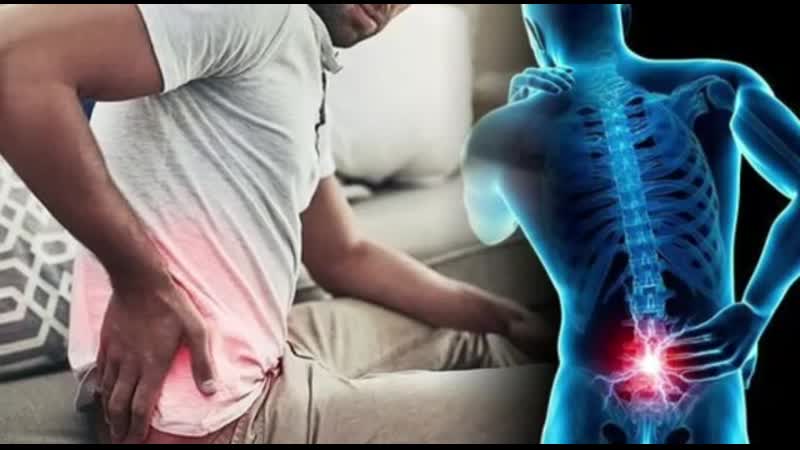 Circuit breakers that interrupt (trip) circuits when current as low as 5 milliamperes leaks are advisable in areas that get wet, such as kitchens and bathrooms and outdoors.
Circuit breakers that interrupt (trip) circuits when current as low as 5 milliamperes leaks are advisable in areas that get wet, such as kitchens and bathrooms and outdoors.
To avoid injury from current that jumps (arcing injury), poles and ladders should not be used near high-voltage power lines.
First the person must be separated from the current’s source. The safest way to do so is to shut off the current—for example, by throwing a circuit breaker or switch or by disconnecting the device from an electrical outlet. No one should touch the person until the current has been shut off.
High-voltage and low-voltage lines are difficult to distinguish, especially outdoors. Shutting off current to high-voltage lines is done by the local power company. Many well-meaning rescuers have been injured by electricity when trying to free a person.
Once the person can be safely touched, the rescuer should check to see if the person is breathing and has a pulse. If the person is not breathing and has no pulse, cardiopulmonary resuscitation First-Aid Treatment for Cardiac Arrest Cardiac arrest is when the heart stops pumping blood and oxygen to the brain and other organs and tissues. Sometimes a person can be revived after cardiac arrest, particularly if treatment is… read more (CPR) should be started immediately. Emergency medical assistance should be called for any person who has more than a minor injury. Because the extent of an electrical burn may be deceptive, medical assistance should be sought if any doubt exists regarding severity.
Sometimes a person can be revived after cardiac arrest, particularly if treatment is… read more (CPR) should be started immediately. Emergency medical assistance should be called for any person who has more than a minor injury. Because the extent of an electrical burn may be deceptive, medical assistance should be sought if any doubt exists regarding severity.
People with rhabdomyolysis are usually given large amounts of fluids intravenously.
A tetanus shot Vaccination Tetanus results from a toxin produced by the anaerobic bacteria Clostridium tetani. The toxin makes muscles contract involuntarily and become rigid. Tetanus usually develops after a wound… read more is given if needed.
If the injury is painful, people are given analgesics.
Skin burns Burns are treated with burn cream and sterile dressings. A person with only minor skin burns can usually be treated at home. If the injury is more severe, the person is admitted to the hospital, ideally a burn center. The person is kept in the hospital for 6 to 12 hours if any of the following exists:
The person is kept in the hospital for 6 to 12 hours if any of the following exists:
The heartbeat or results of an electrocardiogram Electrocardiography Electrocardiography (ECG) is a quick, simple, painless procedure in which the heart’s electrical impulses are amplified and recorded. This record, the electrocardiogram (also known as an ECG)… read more (ECG) are abnormal
The person has symptoms of a heart problem (for example, chest pain Chest Pain Chest pain is a very common complaint. Pain may be sharp or dull, although some people with a chest disorder describe their sensation as discomfort, tightness, pressure, gas, burning, or aching… read more or sometimes shortness of breath Shortness of Breath Shortness of breath—what doctors call dyspnea—is the unpleasant sensation of having difficulty breathing. People experience and describe shortness of breath differently depending on the cause… read more )
The person has other severe injuries
The person is pregnant (in many, but not necessarily all, cases)
The person has a known heart problem (in many, but not necessarily all, cases)
Young children who bite or suck on electrical cords should be referred to a children’s orthodontist, an oral surgeon, or a surgeon who is experienced in the care of these injuries.
The following are some English-language resources that may be useful. Please note that THE MANUAL is not responsible for the content of these resources.
Centers for Disease Control and Prevention, National Institute for Occupational Safety and Health (NIOSH): Electrical Safety: This important repository of tips for ensuring workplace safety provides information on the scope of electrical hazards faced by workers, as well as how to mitigate them and treat their effects.
Electrical Safety Foundation International (ESFI): Information on how to ensure electrical safety in the home and workplace, including information on how to recognize warning signs of electrical hazards as well as advances in safety technology.
NOTE:
This is the Consumer Version.
DOCTORS:
VIEW PROFESSIONAL VERSION
VIEW PROFESSIONAL VERSION
Copyright © 2023 Merck & Co. , Inc., Rahway, NJ, USA and its affiliates. All rights reserved.
, Inc., Rahway, NJ, USA and its affiliates. All rights reserved.
Test your knowledge
Take a Quiz!
Electric shock (electrical injury): causes, symptoms and recommendations for the treatment of the disease. Dr. Peter
In case of electric shock, the symptoms depend on the electrical voltage. Factors such as duration of current exposure, current flow, and patient constitution also affect the type and severity of symptoms. An electrical accident is more likely to occur when a person comes into contact with electricity and is injured as a result.
If the victim touches a live object and the ground at the same time, he will be drawn into the chain and receive an electric shock. The current seeks a path through the body (for example, from an arm to a leg or from a right arm to a left arm). The extent of this damage to health depends on several factors.
The intensity of the current flow and the duration of the incident play a decisive role.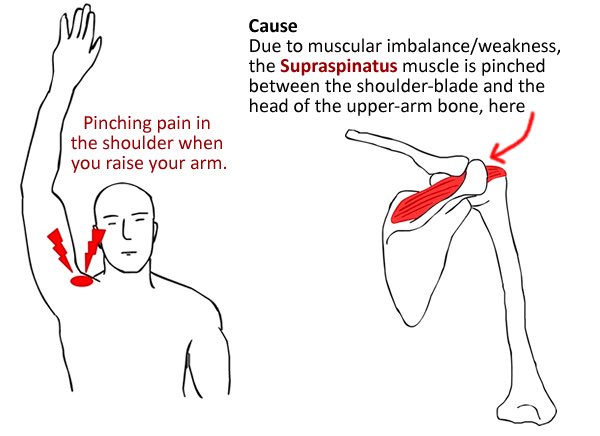 Electrical injury is especially critical when important parts of the body, such as the heart or brain, have been exposed to electrical current.
Electrical injury is especially critical when important parts of the body, such as the heart or brain, have been exposed to electrical current.
Causes
There are many electrical hazards in the household due to unsafe practices. The causes of electric shock (electrical injury) are the use of faulty devices (for example, lack of insulation on a network cable) and handling cables without special knowledge. Contact with bare wires can result in electric shock.
Young children who play near loose sockets are at great risk. Dangers also lurk in nature: for example, lightning can strike you during a thunderstorm. Particular care should be taken near overhead power lines. If such a line is damaged by a storm or snow, then live wires may fall to the ground. You cannot walk near such wires. You also risk electrocution if you fly a kite under such a power line.
Symptoms of electric shock (electrical injury)
In the case of electric shock, the symptoms depend on the voltage to which the victim has been exposed. Factors such as duration of exposure, current flow, and patient constitution also affect the type and severity of symptoms.
Factors such as duration of exposure, current flow, and patient constitution also affect the type and severity of symptoms.
Low voltage accidents, such as those that can occur when blow-drying in the bathroom, cause minor burns or muscle spasms. Prolonged exposure to low voltage can cause death. Usually, cardiac arrest or severe burns occur, leading to cardiac arrest.
High voltage accidents cause severe burns and abnormal heart rhythms. Depending on the severity of the electric shock, ventricular fibrillation or even complete cardiac arrest may occur. In most cases, an accident with high voltage electricity leads to the death of the victim. A lightning strike causes severe burns and damage to muscles, bones, and skin. Vessels and nerves are usually also affected. Due to the high voltage, a lightning strike is almost always fatal.
In addition to the acute symptoms of electrical injury, there may be: cardiac arrhythmias, nervous disorders and neurological deficits. They can occur after a few days, weeks or even months, always depending on the severity of the tension and the therapeutic measures taken.
They can occur after a few days, weeks or even months, always depending on the severity of the tension and the therapeutic measures taken.
Electrical shock can lead to various health problems, including death. But it is possible that the victim will suffer an electrical injury without significant injury. Depending on the strength of the current and the duration of the current exposure, the patient develops muscle paralysis of varying degrees.
Convulsions, loss of consciousness and respiratory arrest are also possible. If the heart is in current, life-threatening ventricular fibrillation or cardiac arrest may occur. Burns (electrical traces) occur at the points of entry or exit of current from the body. In the event of an electric shock, the patient sometimes experiences severe convulsions, which can lead to bone fractures.
Possible complications and risks
Complications after electrical injury affect various organ systems. Very often, the current causes consequences in the form of heart rhythm disturbances, which in many cases occur immediately, sometimes with some delay. In addition, as a result of burns, the muscle tissue of the heart can be damaged, which has a long-term effect on the functioning of the cardiovascular system.
In addition, as a result of burns, the muscle tissue of the heart can be damaged, which has a long-term effect on the functioning of the cardiovascular system.
Damage to the airways, like paralysis of the respiratory center, can lead to life-threatening respiratory arrest. Nervous tissue has low resistance and therefore is often affected by electrical injuries: the consequences can be paralysis, sensory disturbances and impaired coordination. Brain damage manifests itself, among other things, in clouding of consciousness, convulsions, anxiety and memory disorders.
These symptoms may be caused either directly by the action of the current, or as a result of malnutrition of the brain after exposure to the cardiovascular system. Involuntary muscle spasms can cause muscle and tendon ruptures and bone fractures. In severe cases, exposure to current can lead to the destruction of muscle fibers (myolysis).
Other complications after electrical injury include skin burns with blistering and subsequent scarring, as well as impaired kidney function and even kidney failure.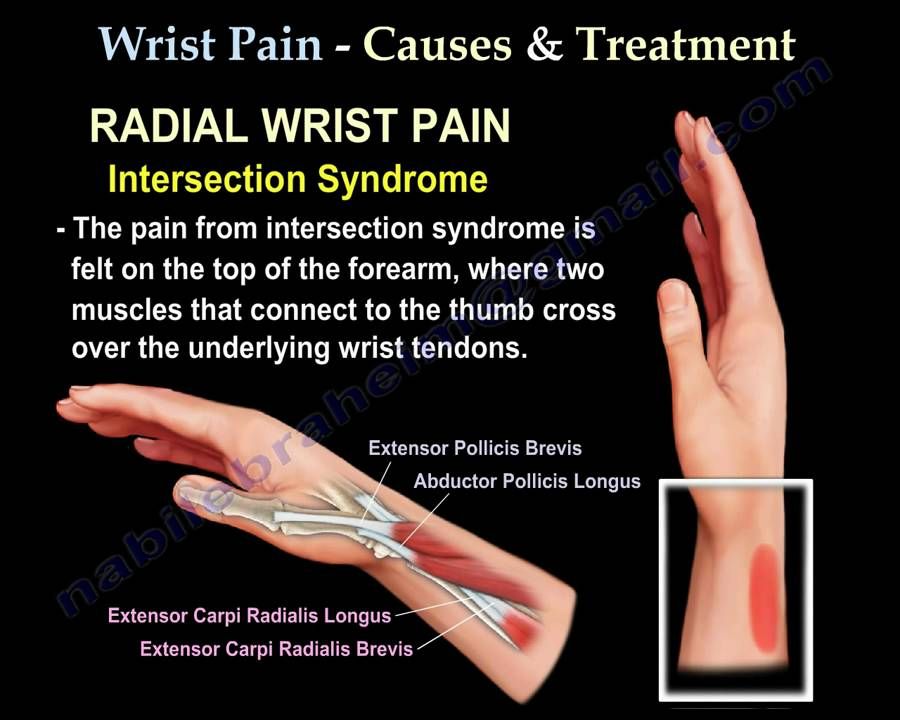 Damage to blood vessels is also possible, which can lead to thrombosis and embolism. Blood poisoning, which can occur as a result of a bacterial infection or a burn of body tissues, is life-threatening.
Damage to blood vessels is also possible, which can lead to thrombosis and embolism. Blood poisoning, which can occur as a result of a bacterial infection or a burn of body tissues, is life-threatening.
Diagnosis
Mild electric shock usually does not require a doctor. The injured person needs some time to recover and rest in order to move away from the defeat. Usually there is internal irritability, short-term tachycardia and arousal, which slowly disappear within a few minutes. If there are no further complaints or inconveniences, medical attention is not required.
In case of severe electric shock, seek medical attention. In the presence of burns, pain or cramps in the muscles, additional examinations are necessary to determine the degree of damage to the body, in order to then draw up an individual treatment plan. In case of violations of the circulatory system, cardiac activity or shortness of breath, it is necessary to consult a doctor as soon as possible.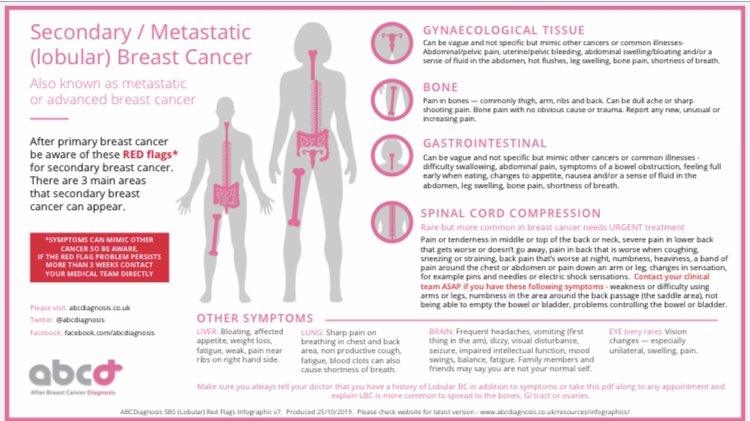 In case of loss of consciousness, extensive body injuries or severe pain, call the emergency service.
In case of loss of consciousness, extensive body injuries or severe pain, call the emergency service.
How to treat electric shock (electrical injury)
First aid measures must be taken before the emergency doctor arrives. Since a strong electric shock in severe cases leads to premature death of the victim, it becomes necessary to take immediate measures in the event of nervous disorders, diffuse disorders of various body functions, bone injuries or cardiac arrest. Intensive medical care is necessary to ensure the life of the victim.
If a patient has suffered an electric shock, the first aid provider must take protective measures to avoid exposing himself to danger. Before touching the victim, you must disconnect your body from the power source.
If there is a live cable nearby, use a non-conductive object (such as a wooden broom) to remove it. If the patient is unconscious, first aid measures (cardiac massage, artificial respiration) should be started immediately.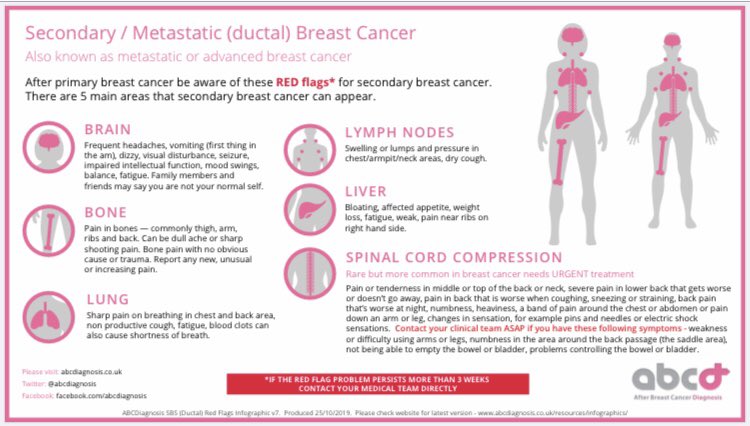
If the victim is conscious, treat burns resulting from an electrical accident. If the injuries are minor and the victim has no other complaints, you should still go to the hospital. They’ll do an EKG there. Heart rhythm disturbances sometimes occur several hours after an electrical injury. The severity of the electrical shock determines the need for subsequent treatment steps. If the burns are severe, toxins can enter the body due to tissue necrosis.
Prevention
To avoid electric shock in your home, you should follow some safety precautions. Never use broken electronic devices. It is always necessary to call a specialist to repair electrical cables. If there are small children in the house, you should close the sockets with special plugs and explain to the children that you cannot touch the sockets and turn on electrical appliances on your own.
When outdoors, it is important to take shelter during a thunderstorm to avoid being struck by lightning. Particular care should be taken near power lines.

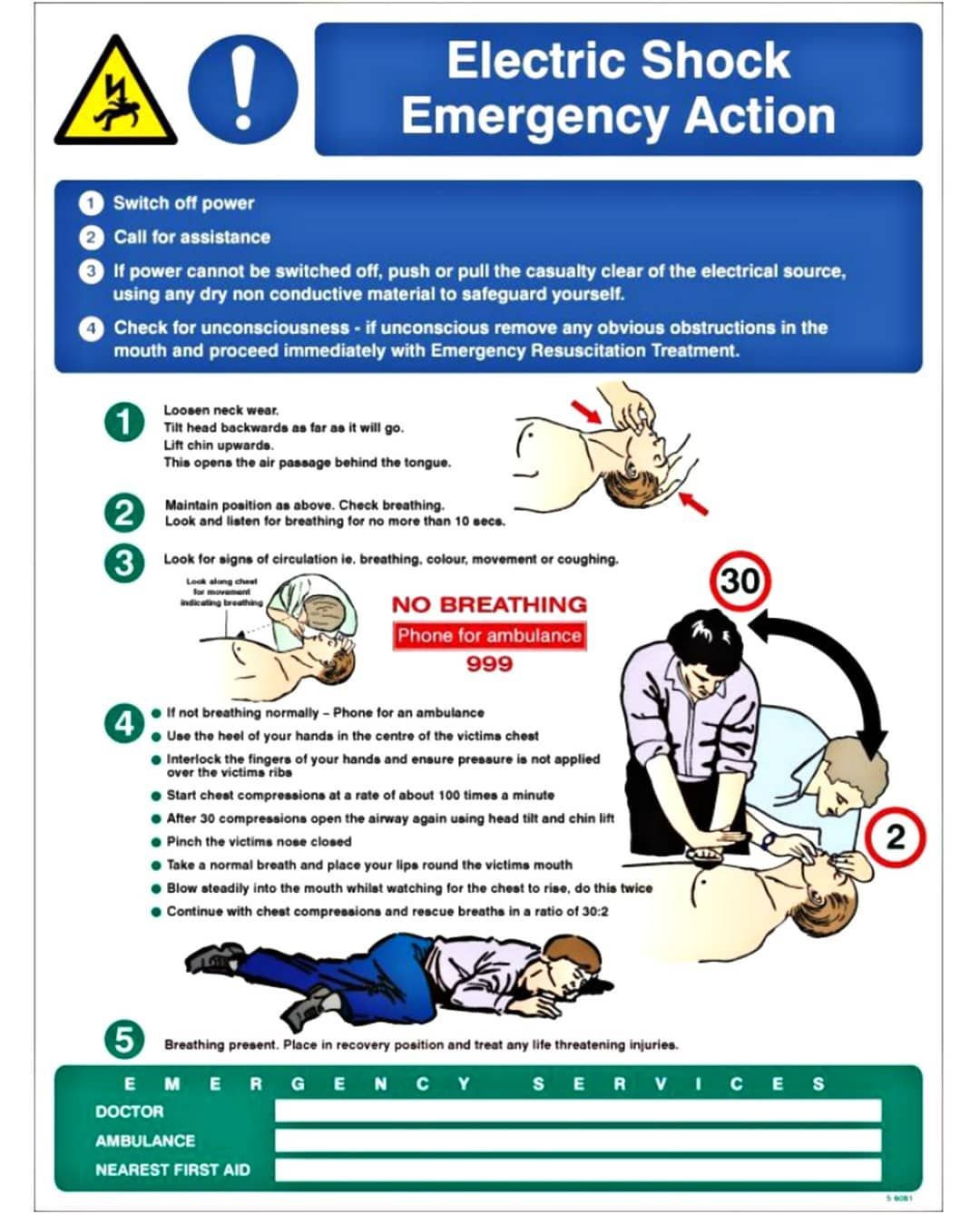
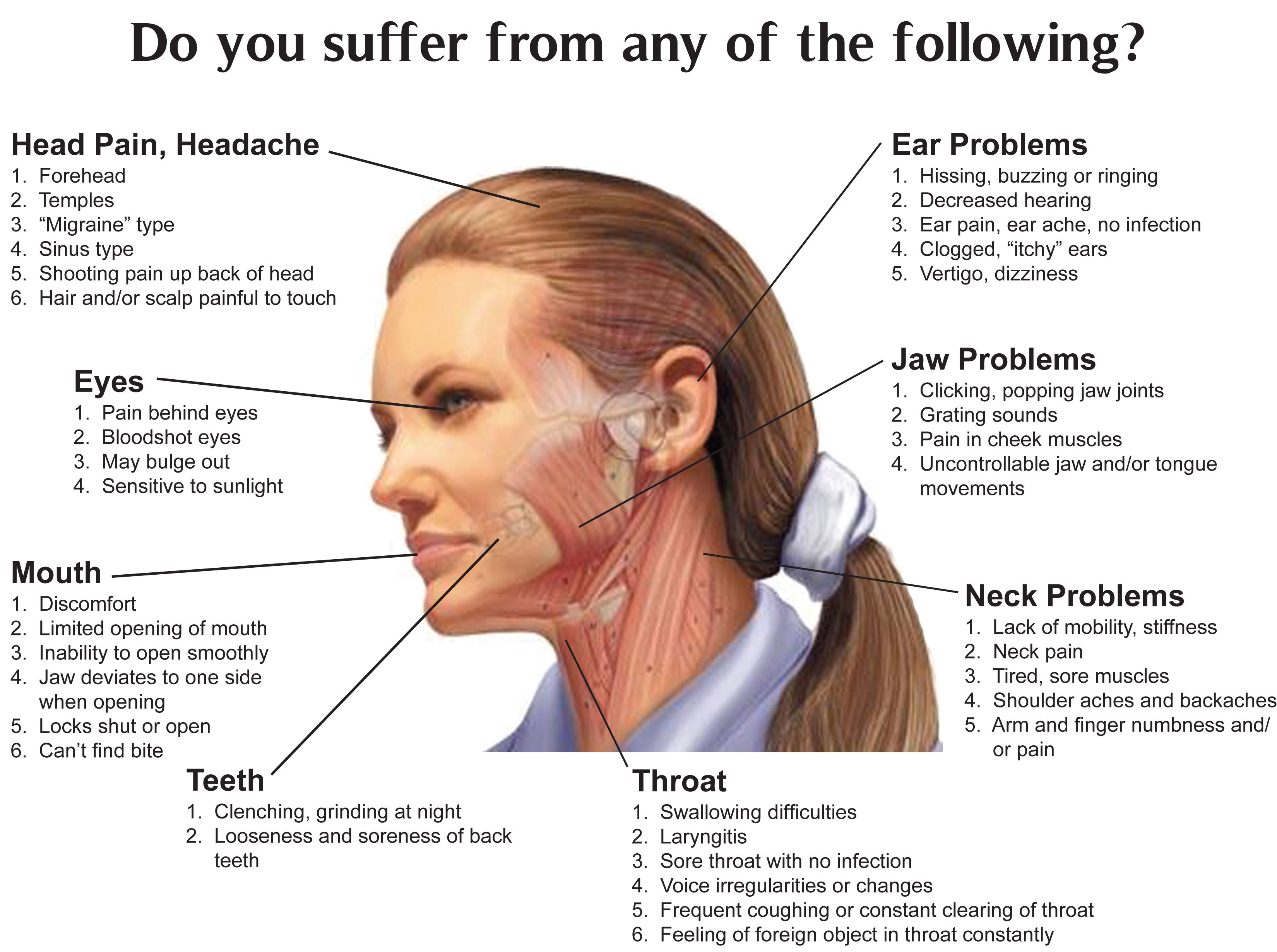 Sometimes a person can be revived after cardiac arrest, particularly if treatment is… read more )
Sometimes a person can be revived after cardiac arrest, particularly if treatment is… read more ) Thus, the effect of the current is prolonged, which aggravates burns. As a rule, the higher the voltage and current, the greater the damage – this applies to both AC and DC shock.
Thus, the effect of the current is prolonged, which aggravates burns. As a rule, the higher the voltage and current, the greater the damage – this applies to both AC and DC shock.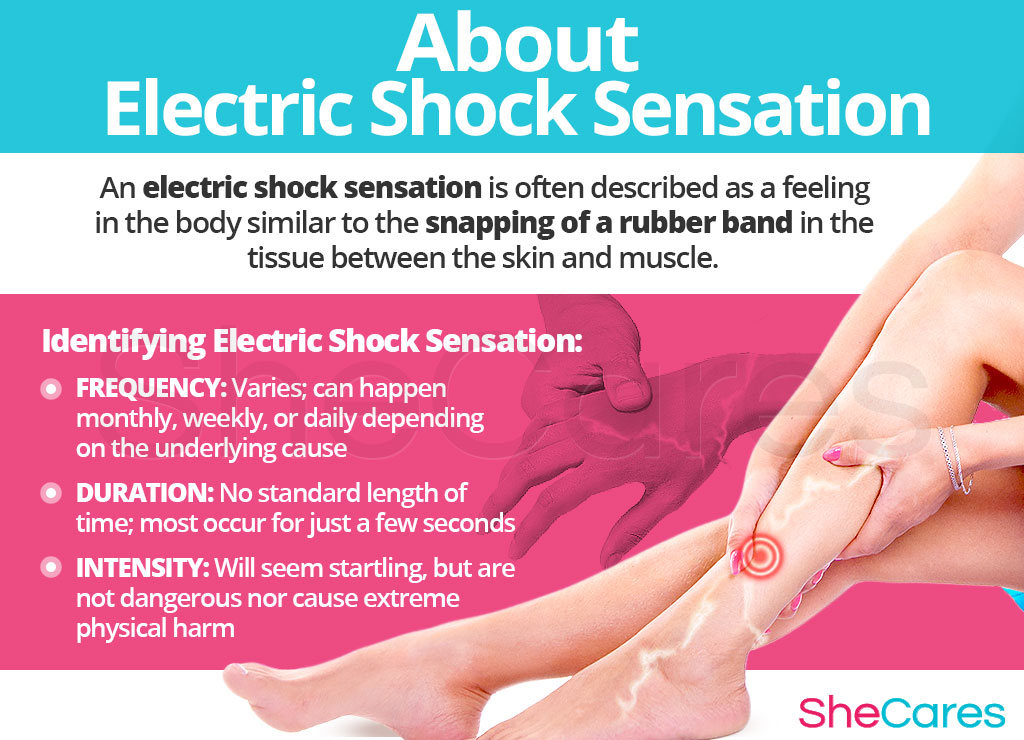 In the case of direct current, the same effect is achieved at a current strength of about 300-500 mA. If the current passes directly through the heart, for example through a pacemaker, then less than 1 mA is enough to cause an abnormal heart rhythm.
In the case of direct current, the same effect is achieved at a current strength of about 300-500 mA. If the current passes directly through the heart, for example through a pacemaker, then less than 1 mA is enough to cause an abnormal heart rhythm. Internal organs are also affected; the degree of this damage depends on their electrical resistance.
Internal organs are also affected; the degree of this damage depends on their electrical resistance.